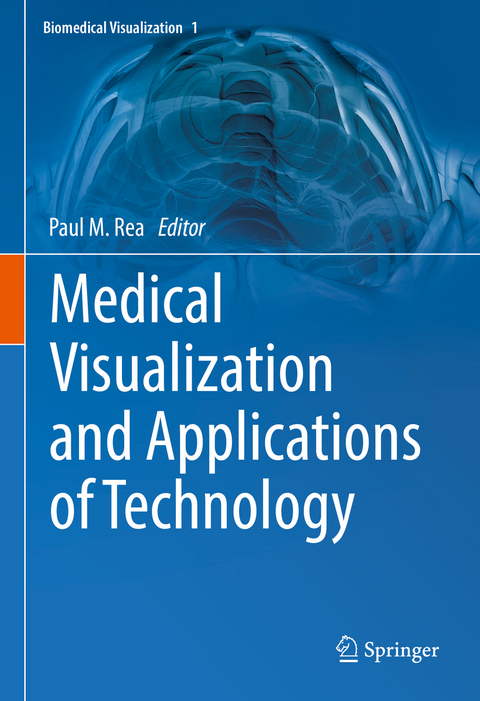
Medical Visualization and Applications of Technology
Springer International Publishing (Verlag)
978-3-031-06734-1 (ISBN)
This edited book explores the use of technology to enable us to visualize the life sciences in a more meaningful and engaging way. It will enable those interested in visualization techniques to gain a better understanding of the applications that can be used in visualization, imaging and analysis, education, engagement and training. The reader will also be able to learn about the use of visualization techniques and technologies for the historical and forensic settings.
The reader will be able to explore the utilization of technologies from a number of fields to enable an engaging and meaningful visual representation of the biomedical sciences.
We have something for a diverse and inclusive audience ranging from healthcare, patient education, animal health and disease and pedagogies around the use of technologies in these related fields. The first four chapters cover healthcare and detail how technology can be used to illustrate emergency surgical access to the airway, pressure sores, robotic surgery in partial nephrectomy, and respiratory viruses.
The last six chapters in the education section cover augmented reality and learning neuroanatomy, historical artefacts, virtual reality in canine anatomy, holograms to educate children in cardiothoracic anatomy, 3D models of cetaceans, and the impact of the pandemic on digital anatomical educational resources.
Paul is a Professor of Digital and Anatomical Education at the University of Glasgow. He is qualified with a medical degree (MBChB), a MSc (by research) in craniofacial anatomy/surgery, a PhD in neuroscience, the Diploma in Forensic Medical Science (DipFMS), and an MEd with Merit (Learning and Teaching in Higher Education). He is a Senior Fellow of the Higher Education Academy, professional member of the Institute of Medical Illustrators (MIMI) and a registered medical illustrator with the Academy for Healthcare Science. Paul has published widely and presented at many national and international meetings, including invited talks. He sits on the Executive Editorial Committee for the Journal of Visual Communication in Medicine, is Associate Editor for the European Journal of Anatomy and reviews for 25 different journals/publishers. He is the Public Engagement and Outreach lead for anatomy coordinating collaborative projects with the Glasgow Science Centre, NHS and Royal College of Physicians and Surgeons of Glasgow. Paul is also a STEM ambassador and has visited numerous schools to undertake outreach work. His research involves a long-standing strategic partnership with the School of Simulation and Visualisation The Glasgow School of Art. This has led to multi-million pound investment in creating world leading 3D digital datasets to be used in undergraduate and postgraduate teaching to enhance learning and assessment. This successful collaboration resulted in the creation of the worlds first taught MSc Medical Visualisation and Human Anatomy combining anatomy and digital technologies. The Institute of Medical Illustrators also accredits it. It has created college-wide, industry, multi-institutional and NHS research linked projects for students. Paul is the Programme Director for this degree.
Part I. Healthcare.- Chapter 1. Is It Time to FONA Friend? A Novel Mixed Reality Front of Neck Access Simulator.- Chapter 2. "Learning About Skin Breakdown" - Design, Development and Evaluation of an Augmented Reality Application to Inform about Pressure Ulcers (sores) and Moisture Lesions.- Chapter 3. The Use of 3D-Printing and Injection Moulding in the Development of a Low-Cost, Perfused Renal Malignancy Model for Training of Robot-Assisted Laparoscopic Partial Nephrectomy.- Chapter 4. The Co-IMMUNicate App: An Engaging and Entertaining Education Resource on Immunity to Respiratory Viruses.- Part II. Education.- Chapter 5. Application of AR and 3D Technology for Learning Neuroanatomy.- Chapter 6. Communicative Powers of Interactive Digital Mediums in the Field of Polyomics.- Chapter 7. SkilletonVR: Canine Skeleton VR.- Chapter 8. Using Holograms to Engage Young People with Anatomy.- Chapter 9. The Digital Dolphin: Are 3D Mobile Based and Interactive Models a Useful Aidto Volunteers on Stranding Schemes Learning the Basic Anatomy and Pathology of Cetaceans?.- Chapter 10. The Impact of the COVID Crisis on Anatomical Education: A Systematic Review.
| Erscheinungsdatum | 10.09.2022 |
|---|---|
| Reihe/Serie | Biomedical Visualization |
| Zusatzinfo | IX, 323 p. 270 illus. |
| Verlagsort | Cham |
| Sprache | englisch |
| Maße | 178 x 254 mm |
| Gewicht | 818 g |
| Themenwelt | Studium ► 1. Studienabschnitt (Vorklinik) ► Anatomie / Neuroanatomie |
| Sozialwissenschaften ► Pädagogik | |
| Schlagworte | 3D Printing • Anatomy Teaching • augmented reality • digital models • Digital simulation • Hologram • Medical Visualization Techniques • mobile applications • Simulation • surgical training • Virtual Reality |
| ISBN-10 | 3-031-06734-7 / 3031067347 |
| ISBN-13 | 978-3-031-06734-1 / 9783031067341 |
| Zustand | Neuware |
| Haben Sie eine Frage zum Produkt? |
aus dem Bereich


